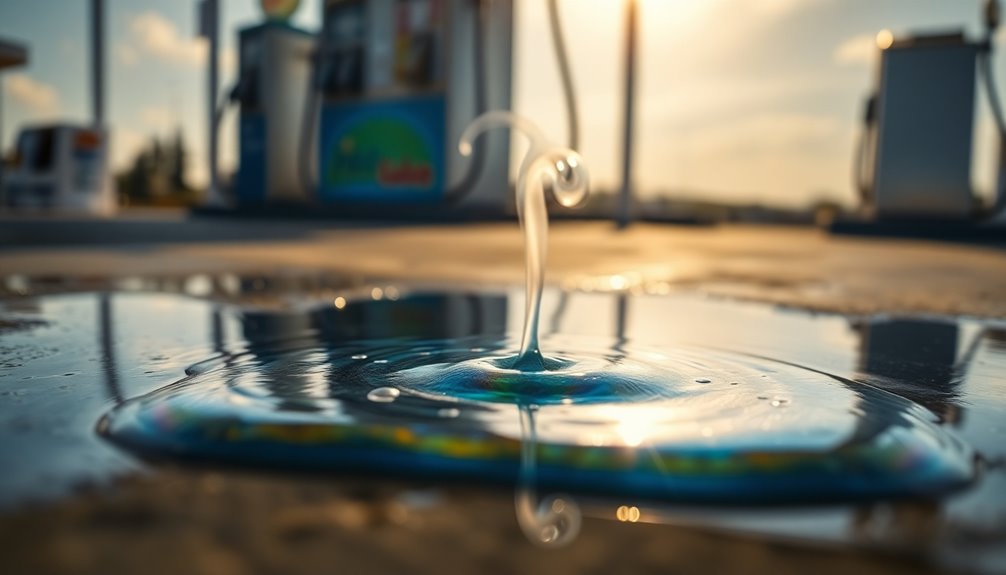When plastic burns, it lets off a sharp, acrid smell that's hard to ignore. You might notice it has a chemical bite mixed with a hint of sweetness. This smell can remind you of burnt rubber or melted toys, making it very distinct. You could encounter this odor during cooking mishaps or when appliances overheat. It's important to act quickly, as burnt plastic can release harmful fumes that affect your health. So, if you catch this scent, it's a good idea to check your surroundings. Stay tuned to discover more about the safety measures you can take!
Key Takeaways
- Burnt plastic emits a sharp, acrid odor that is both overwhelming and repulsive.
- The smell can combine strong chemical notes with hints of sweetness or resemble burnt rubber.
- Different types of plastic produce distinct odors; polyethylene has a sweet smell, while PVC is more acrid.
- The smell serves as a warning signal to check for potential safety hazards nearby.
- Encountering this odor can trigger physical reactions, such as throat scratchiness or nose wrinkling.
Introduction
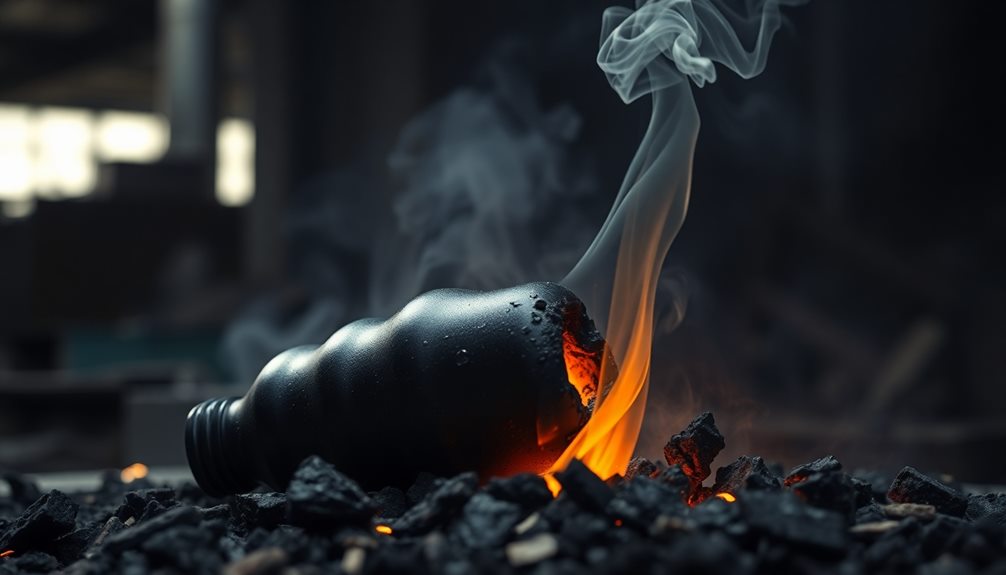
When plastic burns, it releases a distinctive smell that can cling to your senses long after the source is extinguished. You might find yourself wrinkling your nose, trying to identify the source of that unusual odor. This smell can arise from various everyday situations, like a forgotten meal in the microwave or a mishap while crafting.
It's essential to understand that burning plastic isn't just unpleasant; it can also be harmful. The fumes can contain toxic chemicals that pose risks to your health, so it's important to act quickly if you encounter it.
This article will guide you through what burnt plastic smells like and why it matters. You'll learn about the different types of plastics and how their burning can produce various scents.
You'll also discover the possible dangers behind inhaling those fumes. By understanding this topic, you can better protect yourself and others from potential health hazards.
Description of the Smell
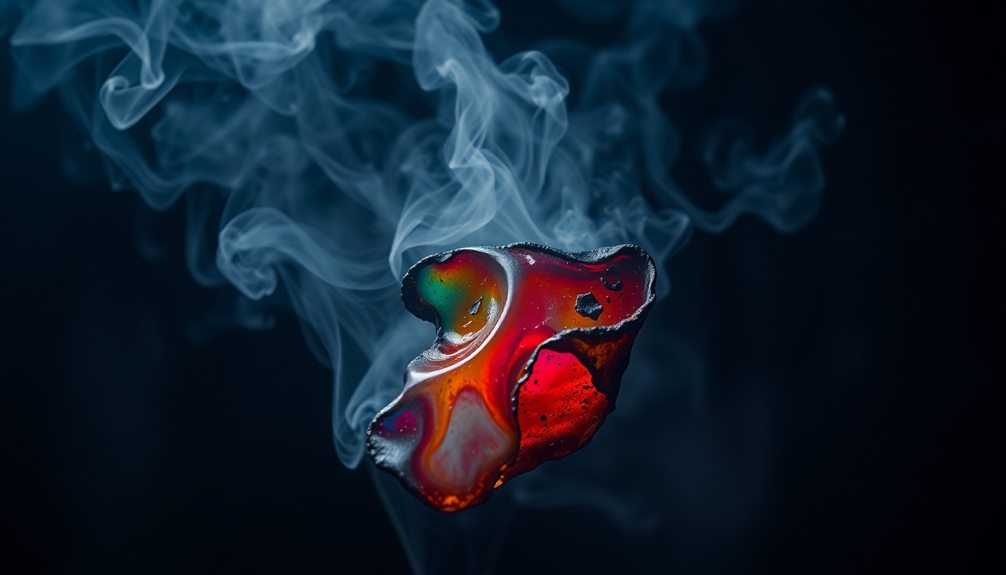
The smell of burnt plastic is often described as a sharp, acrid odor that can be both overwhelming and repulsive. When you catch a whiff, it might remind you of a strong chemical scent mixed with a hint of something sweet, but not in a good way.
It can make your nose tingle and even cause you to wrinkle it in distaste. Imagine walking into a room filled with smoke, where the air feels heavy and thick. You might feel a sudden urge to cover your nose, as that smell clings to everything around it.
It's like a sharp bite that lingers long after the source is gone. You may also notice that the scent can vary slightly. Sometimes it's more pungent, like burnt rubber, while other times it might have a more plastic-like aroma, reminiscent of melted toys or containers.
This odor is often hard to ignore, and it can even make your throat feel scratchy. If you ever smell burnt plastic, it's definitely a signal to check your surroundings and ensure everything's safe. Your senses are crucial for keeping you alert and aware!
Source and Composition
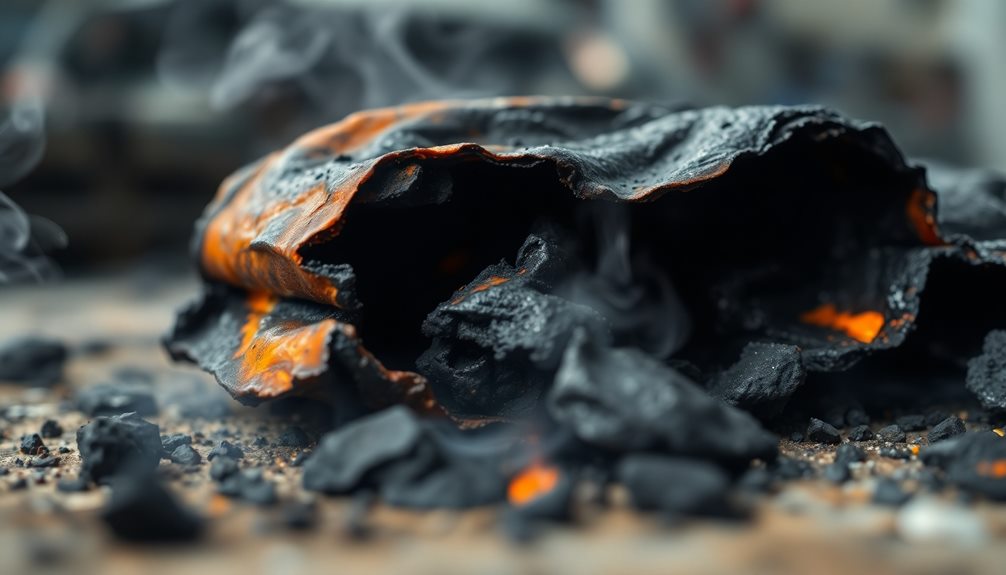
Burnt plastic typically originates from various sources, including household items, industrial materials, and even electronics. When you think about it, plastic is everywhere! From your toys and kitchen gadgets to packaging and furniture, it's a big part of our daily lives.
When plastic burns, it releases a distinct smell that can be pretty unpleasant. The composition of burnt plastic varies depending on what type of plastic it is. For instance, polyethylene, often found in bags and containers, can smell sweet and chemical-like.
On the other hand, polyvinyl chloride (PVC), which you might find in pipes or flooring, gives off a much stronger, acrid odor when it burns.
Some plastics contain additives, such as flame retardants or colorants, which can change the smell even more. So, if you ever catch a whiff of burnt plastic, it's essential to identify the source, as the smell can be a sign of something hazardous.
Understanding the origins and makeup of burnt plastic not only helps you recognize it but also keeps you informed about safety. Next time you encounter that smell, you'll know there's a lot more going on than just a simple burn!
Typical Scenarios or Environments

You might encounter the smell of burnt plastic in various everyday situations, from cooking mishaps to industrial accidents.
Imagine you're in the kitchen, whipping up a delicious meal. Suddenly, you notice a strange odor wafting through the air. That's burnt plastic! It often happens when a plastic utensil or container accidentally touches a hot stove.
You might also catch a whiff while using appliances like toasters or microwaves. If something gets too hot or malfunctions, burnt plastic can fill the room.
In industrial settings, the smell can be more intense. Machines might overheat, causing plastic components to burn. It's essential to be alert in these scenarios, as the smell can indicate something isn't right and may require immediate action.
Even while driving, you might notice the smell if your car's wiring gets too hot or a plastic part fails.
In all these situations, the smell can be pretty strong and unmistakable! Recognizing it can help you identify problems early, keeping you safe and your environment in check.
Emotional or Cultural Associations

Often, the smell of burnt plastic evokes strong emotional responses and cultural memories. When you catch that whiff, it might remind you of a childhood experience, like a school project gone wrong or a family barbecue where something got a bit too crispy. Those moments can stir up feelings of nostalgia, making you smile or cringe, depending on the memory.
In many cultures, burnt plastic signifies change or loss. It's often linked to urban life, where plastic waste is a part of everyday existence. For some, it might evoke the hustle and bustle of a busy street market or the sound of a city coming alive.
Others might think of environmental concerns, reminding them of the impact of pollution on their communities. You might also recall stories shared around the dinner table, where burnt plastic becomes a cautionary tale about safety or responsibility.
The scent can even spark conversations about innovation and recycling efforts, making you ponder how we can do better for the planet. So the next time you smell that distinct scent, take a moment to reflect on what it means to you and the memories it brings to life.
Health or Safety Considerations

The smell of burnt plastic isn't just unpleasant; it can also pose serious health risks. When plastic burns, it releases toxic chemicals, such as dioxins and furans. Breathing in these harmful substances can lead to headaches, nausea, and even respiratory issues.
You might think it's just a bad smell, but it's more than that! If you find yourself near burnt plastic, it's essential to move away from the source. Open windows or doors to let fresh air in, and consider wearing a mask if you can't escape the odor quickly. Protecting yourself is key, especially for children and pets, who are more vulnerable to these toxins.
Long-term exposure can lead to more severe health problems, including damage to your liver and immune system. So, when you catch a whiff of burnt plastic, take it seriously! It's not just a nuisance; it can affect your wellbeing.
Make sure to keep your living space free from burning plastic and educate those around you about the dangers. By staying informed and cautious, you help create a safer environment for everyone. Remember, your health is your priority!
Final Thoughts
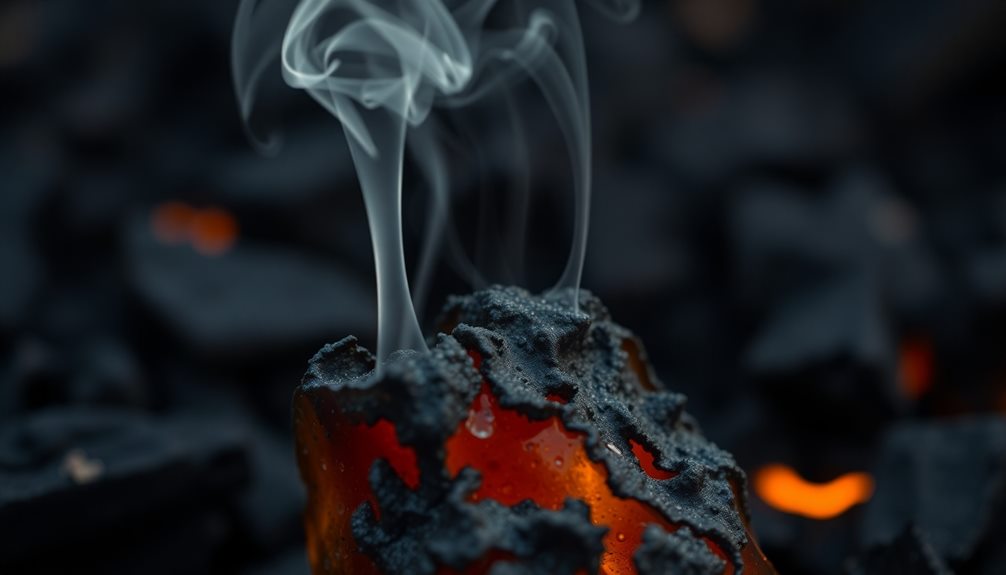
Understanding the dangers associated with burnt plastic is crucial for maintaining a safe environment.
When plastic burns, it releases harmful chemicals that can affect your health and the air quality around you. These fumes can be irritating and even dangerous, so it's essential to recognize that smell. If you ever catch a whiff of that burnt plastic odor, take it seriously.
You might feel tempted to ignore it, but responding promptly can protect you and your loved ones.
Make sure to ventilate the area immediately by opening windows and doors or turning on fans. If the smell persists or worsens, it's wise to leave the space and seek help.
Frequently Asked Questions
Can Burnt Plastic Smell Vary by Type of Plastic?
Yes, burnt plastic smell can vary by type. Each plastic contains different chemicals, which release distinct odors when burned. You might notice variations depending on whether it's polyethylene, PVC, or polystyrene, for instance.
How Can I Identify Burnt Plastic in My Home?
To identify burnt plastic in your home, check for unusual odors, visible smoke, or melted items. If you notice any signs, investigate immediately to prevent potential hazards and ensure your space remains safe.
What Should I Do if I Smell Burnt Plastic?
If you smell burnt plastic, don't ignore it. Check for sources like appliances or wiring. Turn off power if needed, ventilate the area, and consider calling a professional to ensure your safety and prevent fire hazards.
Can Burnt Plastic Smell Linger in the Air?
Yes, burnt plastic smells can linger in the air. If you notice this odor, ventilate the space by opening windows and doors. You'll help dissipate the smell and improve the air quality in your environment.
Is There a Way to Eliminate the Smell of Burnt Plastic?
To eliminate the smell of burnt plastic, you can ventilate the area by opening windows and using fans. Consider placing bowls of vinegar or baking soda around to absorb the odor quickly and effectively.


